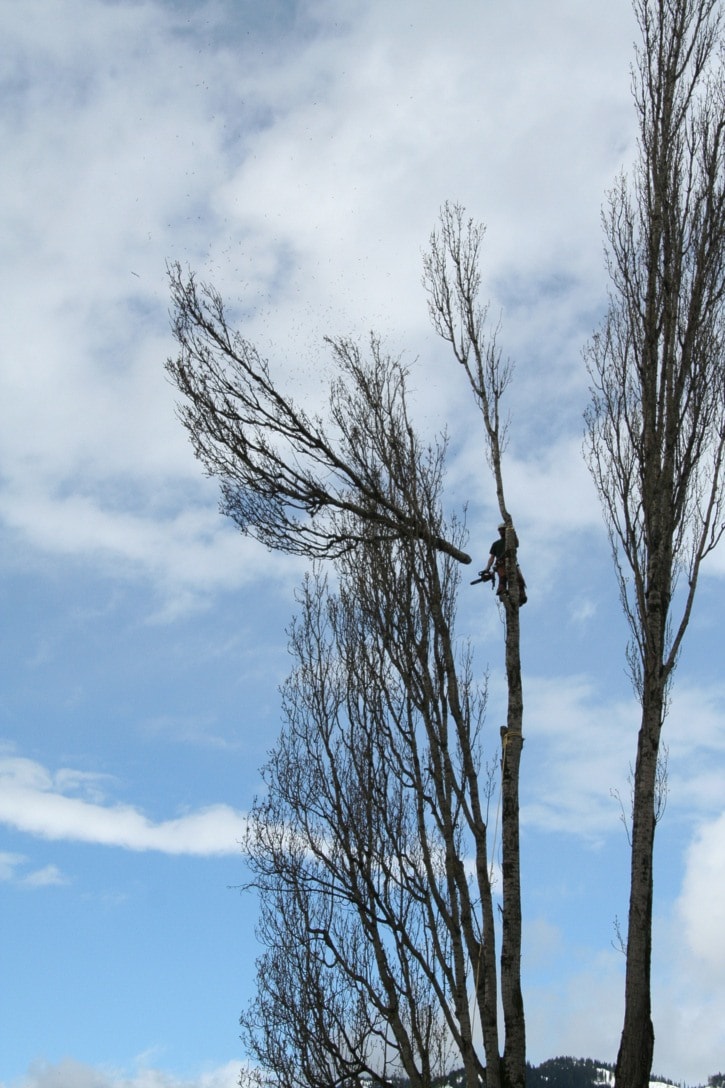It was definitely a shock when it happened - the towering Lombardy Poplar trees in Centennial Park, cut down due to safety risks.
In the spring the city announced 14 of them would come down. In the fall, when the work was done, they were all cut down. Then, shortly after that work was completed, news came forth that 10 red maples on Mackenzie Avenue were slated for the same fate.
That news galvanized the city’s environmental advisory committee (EAC), and after a flurry of e-mails, they put in a request the department of public works to halt the removal of the trees pending review of the city’s tree removal policy. Public works agreed to hold off.
“Since the taking of the Lombardy Poplars, it’s been on the forefront of everyone’s minds,” Angus Woodman, a member of the committee told the Times Review. “We thought it would be good to put a stop to the work and investigate it further.”
The poplars came down after a 50-foot-long limb fell off one of them and crashed down amidst some tents during the Glacier Challenge softball tournament in the summer of 2009.
According to the report by City of Revelstoke arborist Matt McCaw, the poplars suffered from numerous ailments. A June 2, 2009, assessment revealed problems such as a heavy gall infestation, large hangers on many of the trees, many dead branches, poor bark and visible woodpecker holes.
The report also noted that the trees were a “major part of the parks aesthetics,” and were located in a area frequently used by the public. Additionally, they were exposed to high winds.
“With these considerations in mind we decided to try and rectify the hazards through intensive pruning,” the report stated.
In the summer of 2010 two updates mentioned large, falling branches, including the Glacier Challenge Incident.
In April 2011 another update was provided by McCaw. He wrote that even after pruning numerous dead limbs, the trees continued to drop branches.
“These are not long lived trees and although they are not yet at end of their life span, they are close and noted for limb drop and possible blow over in later life,” he wrote. “Unable to guarantee that large failures the likes of the year before wouldn’t occur again it was advised that the trees be removed. Removal is our final and only option.”
As such, in late-October and early-November, Loki Tree Services was contracted to remove all the poplars.
When word came shortly after that the city was also going to cut down 10 red maple trees due to a powdery mildew infestation, the EAC asked for a stop to be put, so they could spend the winter seeing if there were other options.
“The information we have thus far is there’s nothing dangerous about powdery mildew,” said Coun. Antoinette Halberstadt, who sits on the EAC, during last week’s council meeting. “It’s not going to cause a safety hazard or anything.”
The city arborist’s report on the maples was not provided to the Times Review, but according to Darren Komonoski, the head of public works, the trees are also suffering from road salt contamination and eroding compaction areas.
“They dropped their leaves in August, which is not a natural process in any sense,” he said. “They’re just slowly being compromised by a lot of different factors.
During council, Komonoski pointed out that in 2008 council had passed a motion that the red maples be removed on a gradual basis.
“We’re just trying to show good stewardship in removing them slowly and replanting and not clear cutting them all at once,” he clarified after the council meeting. “They’re all going to die over a period of time.”
The EAC also wants the city to review its tree management policy. The policy, which was adopted in 2005, details when, why and how trees can be removed. The committee wants the policy changed to reflect the Official Community Plan, which was adopted in 2009.
While the Lombardy Poplars in Centennial Park are now gone, perhaps the red maples will have a more graceful autumn of their life.
